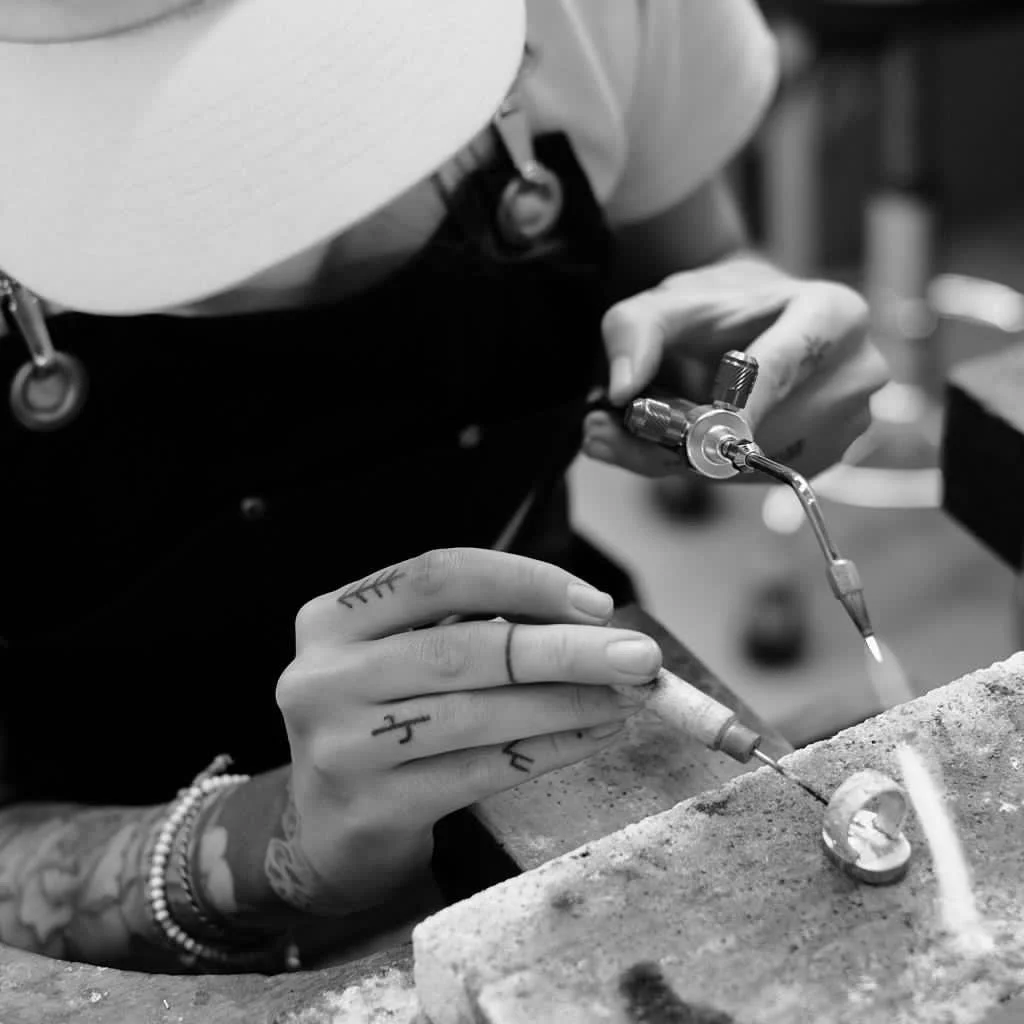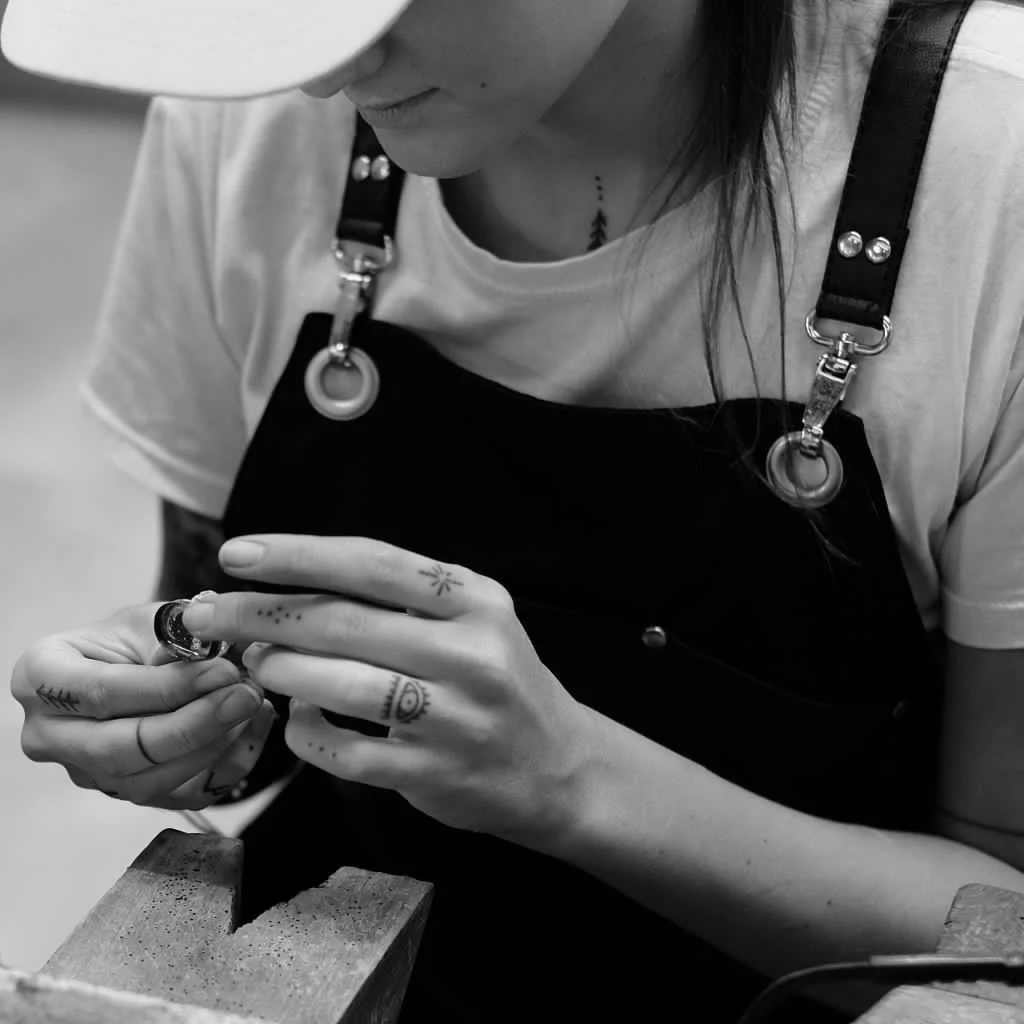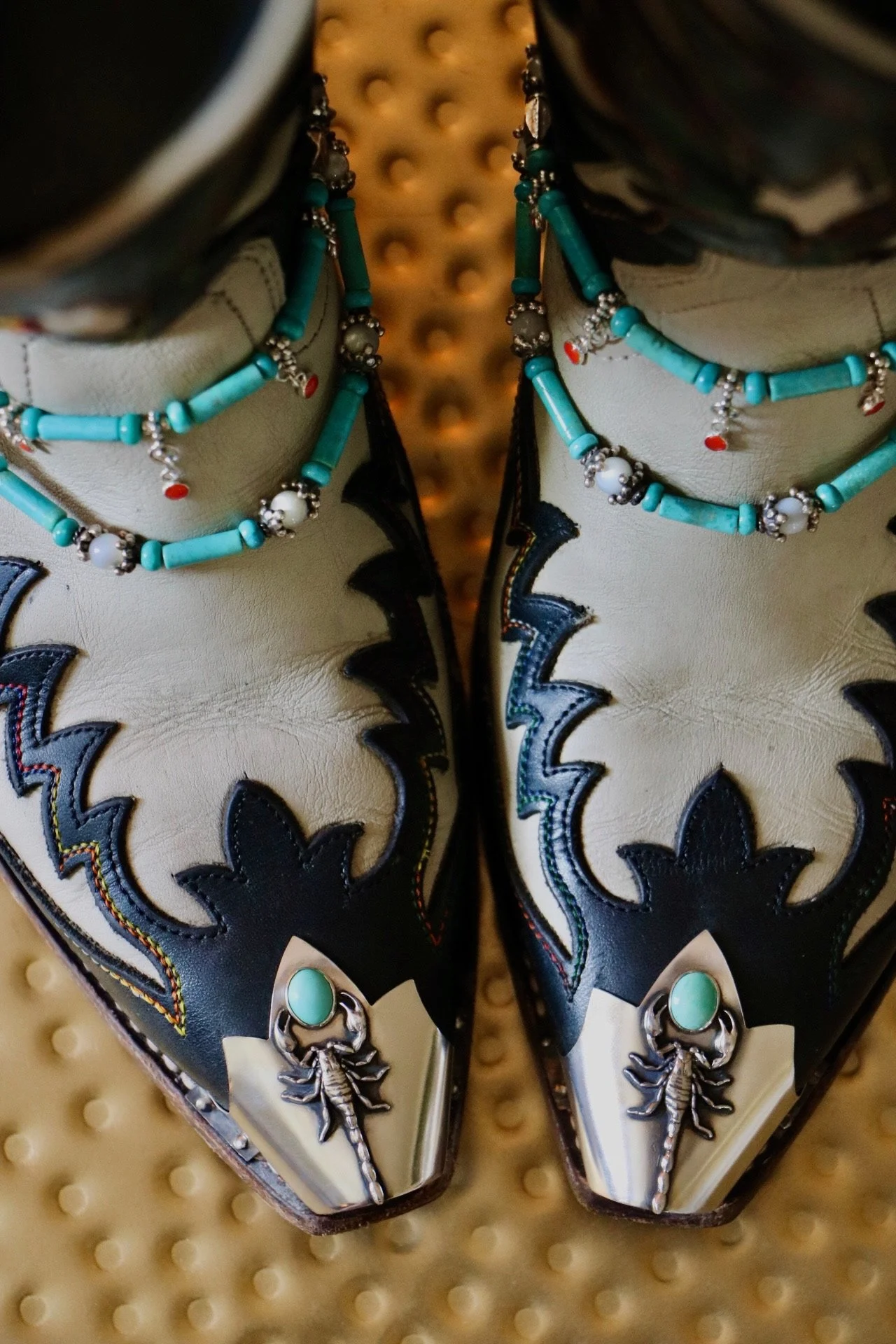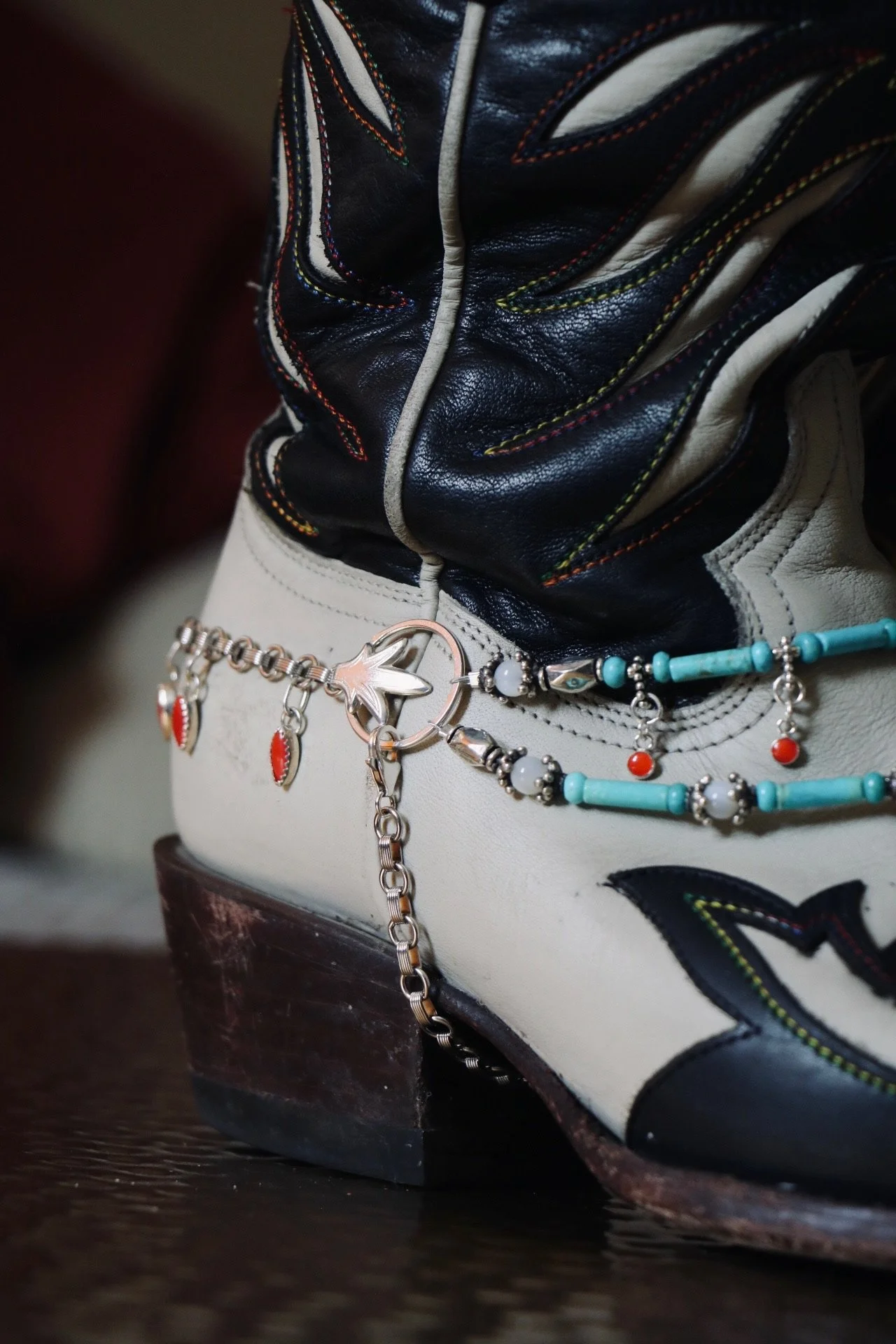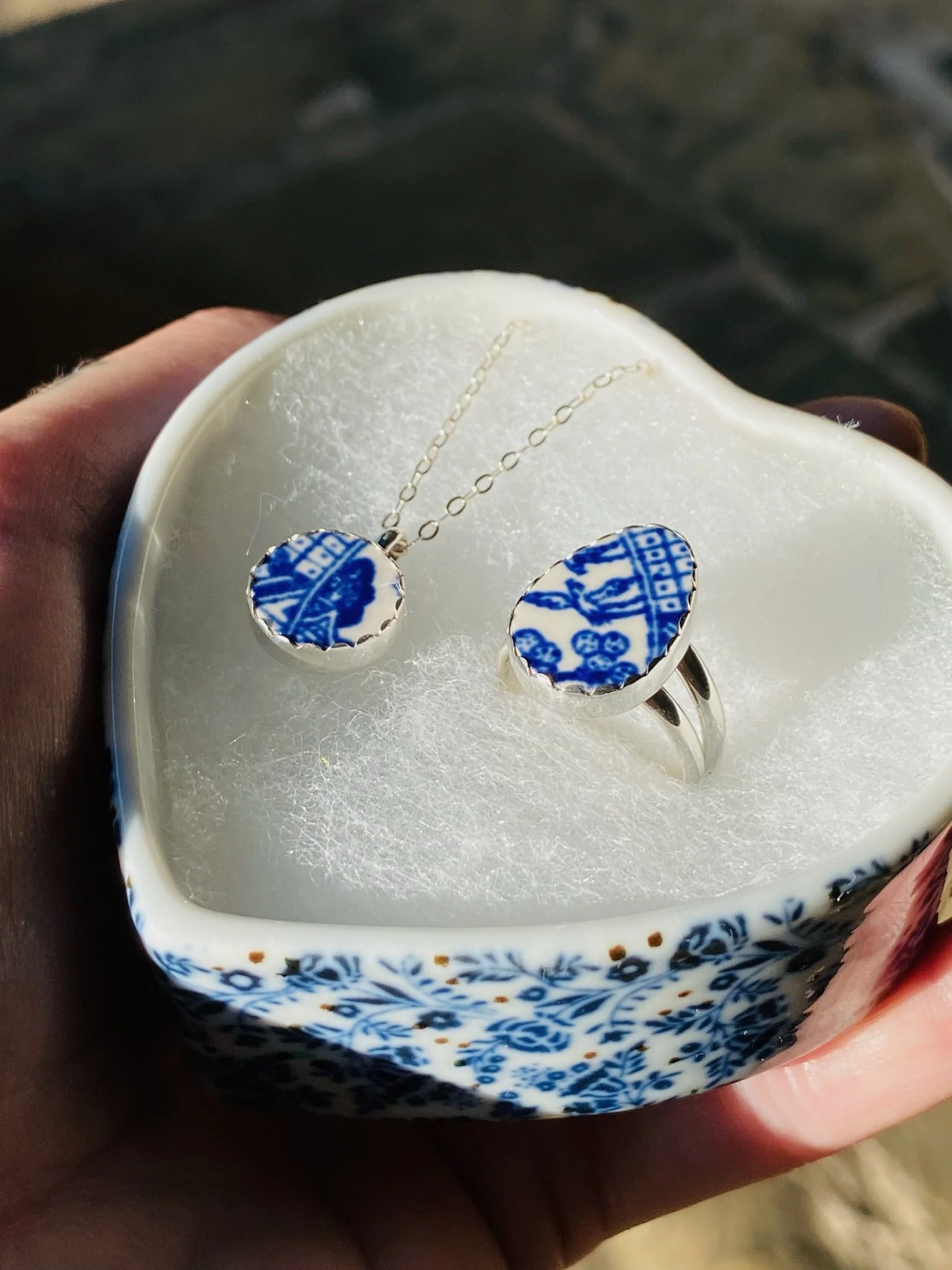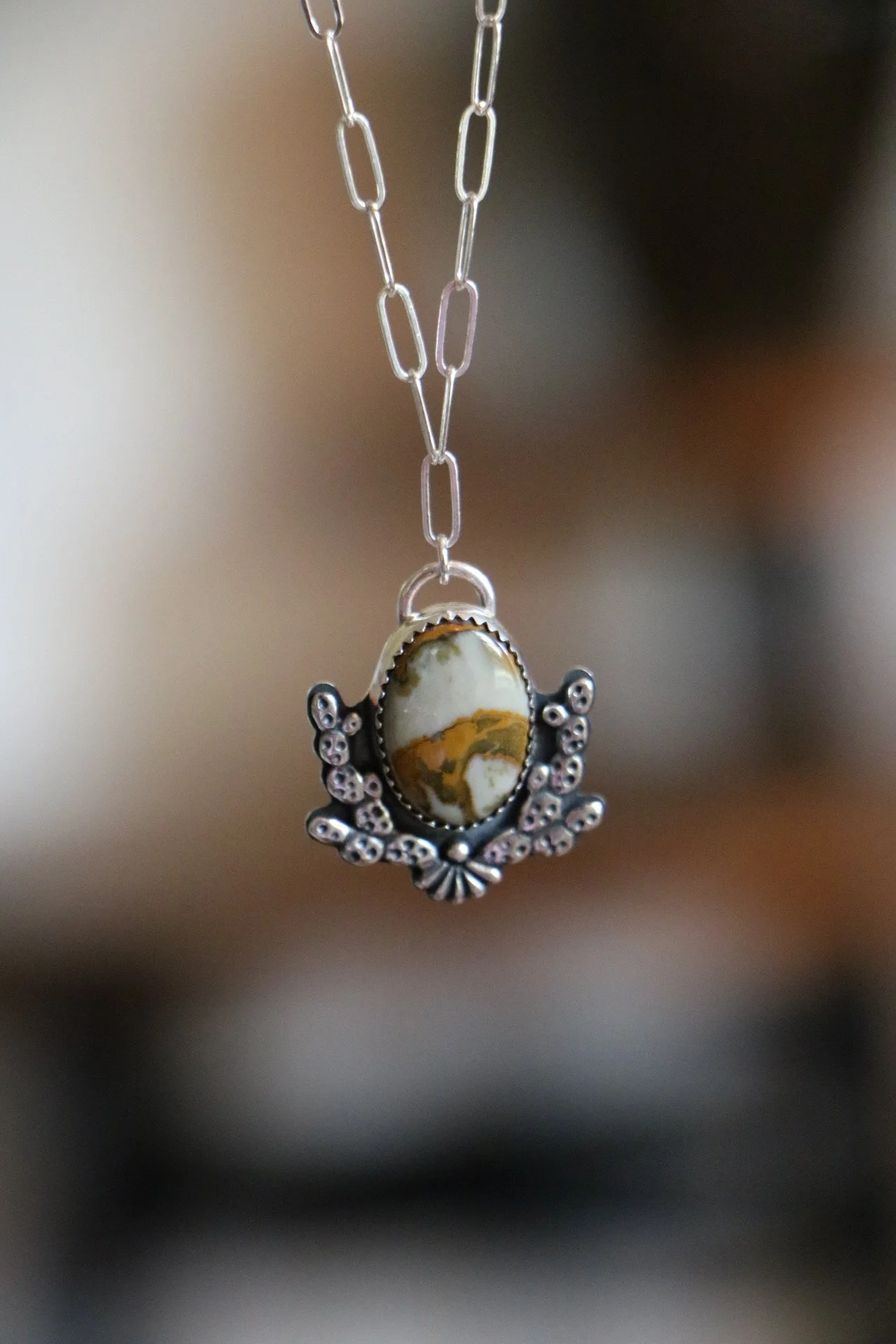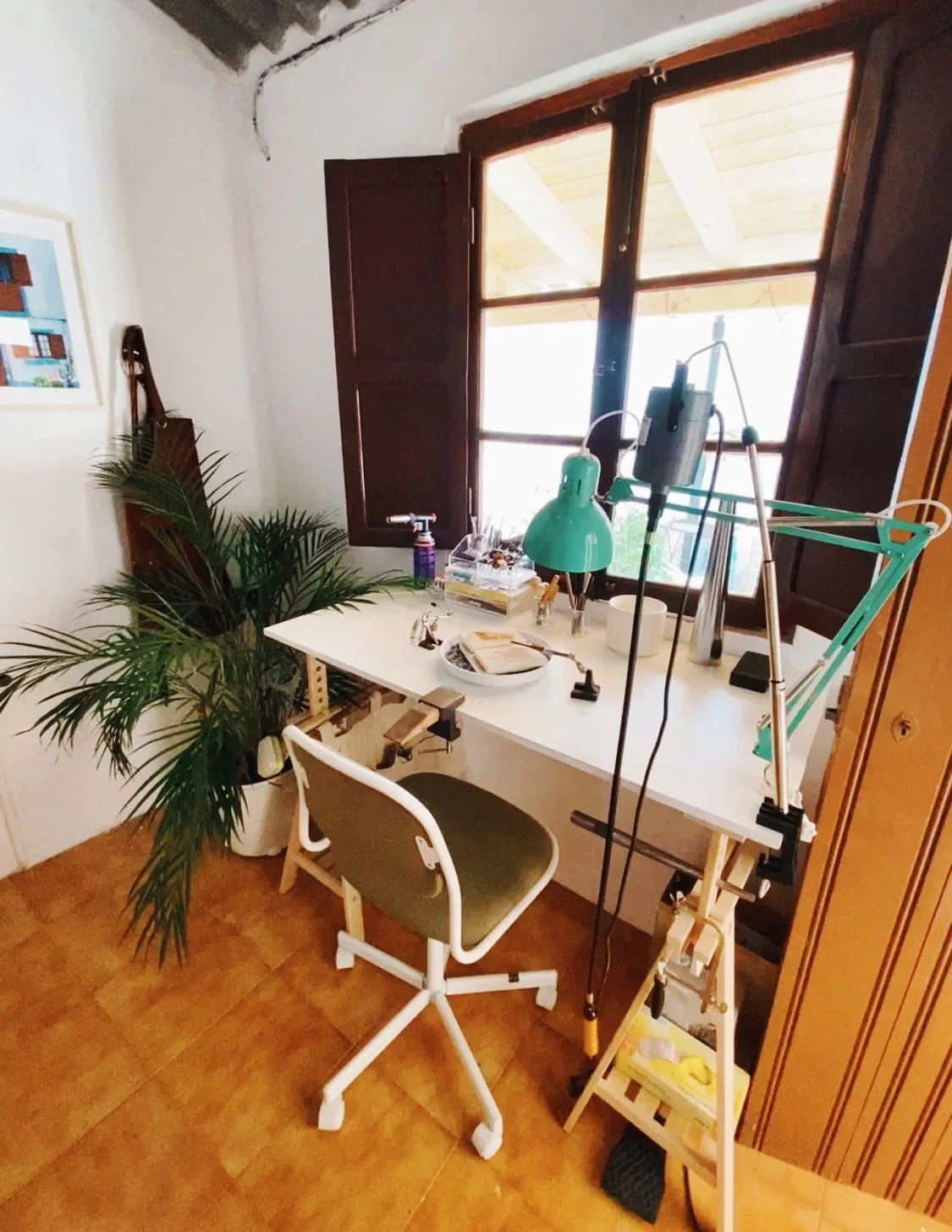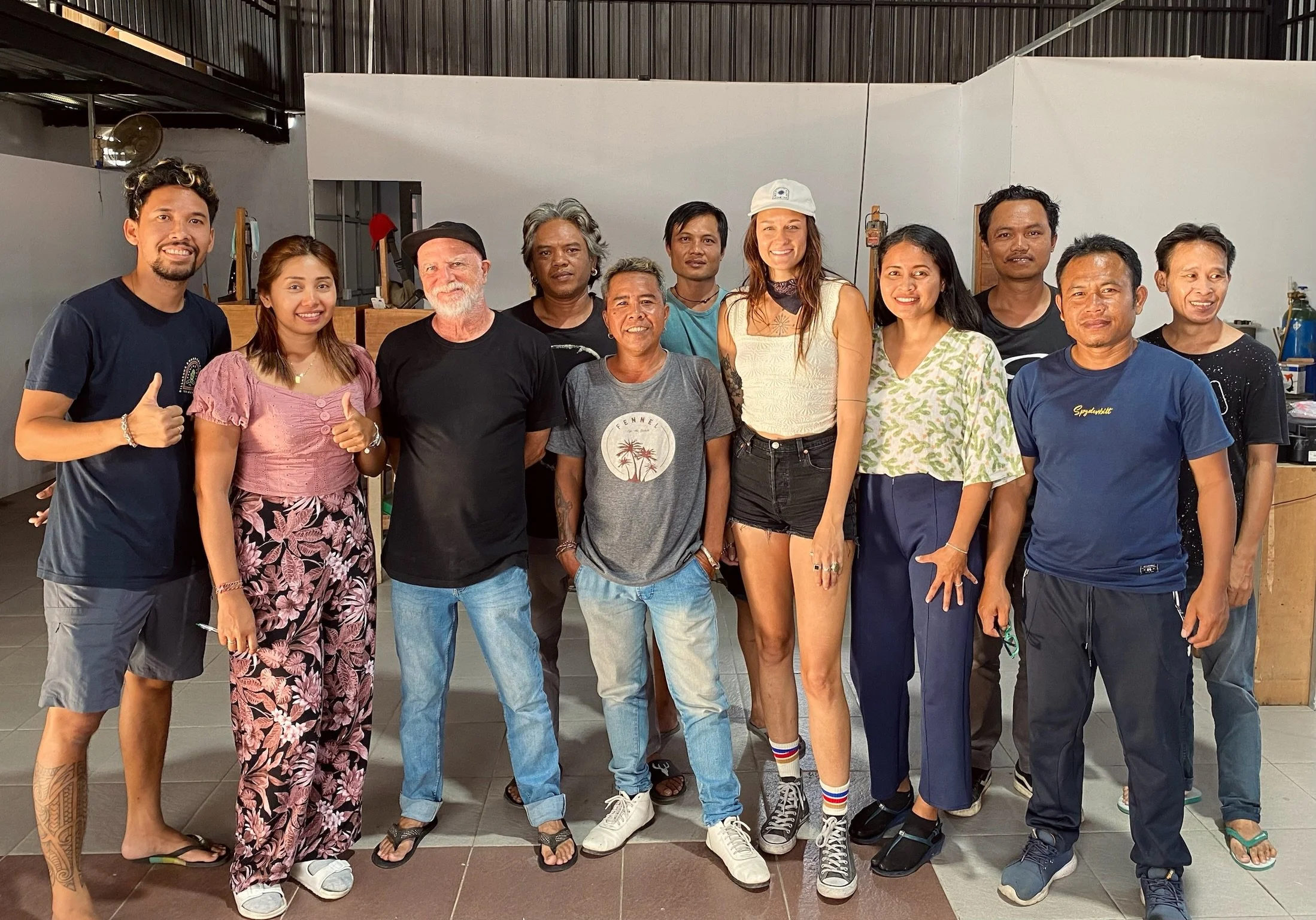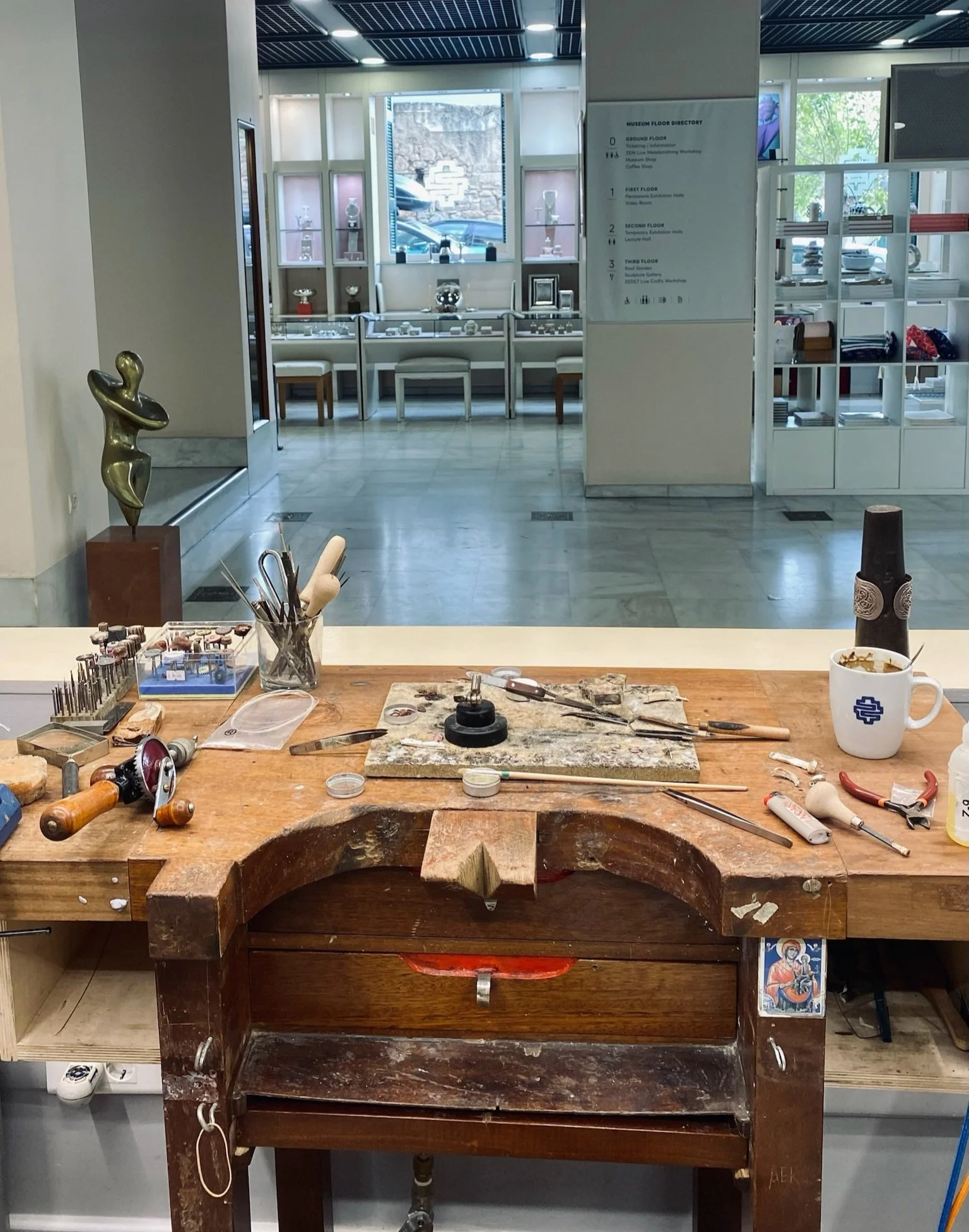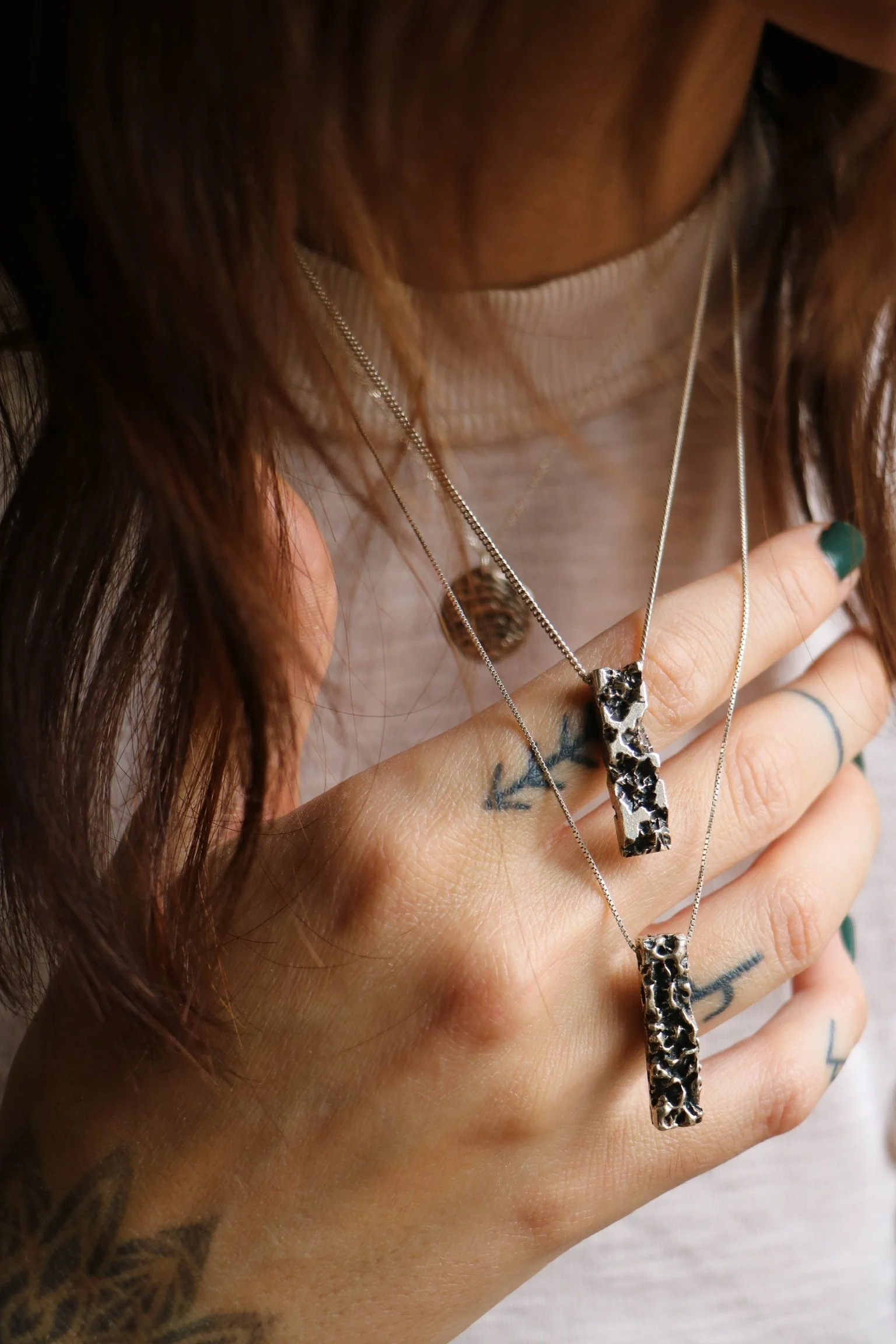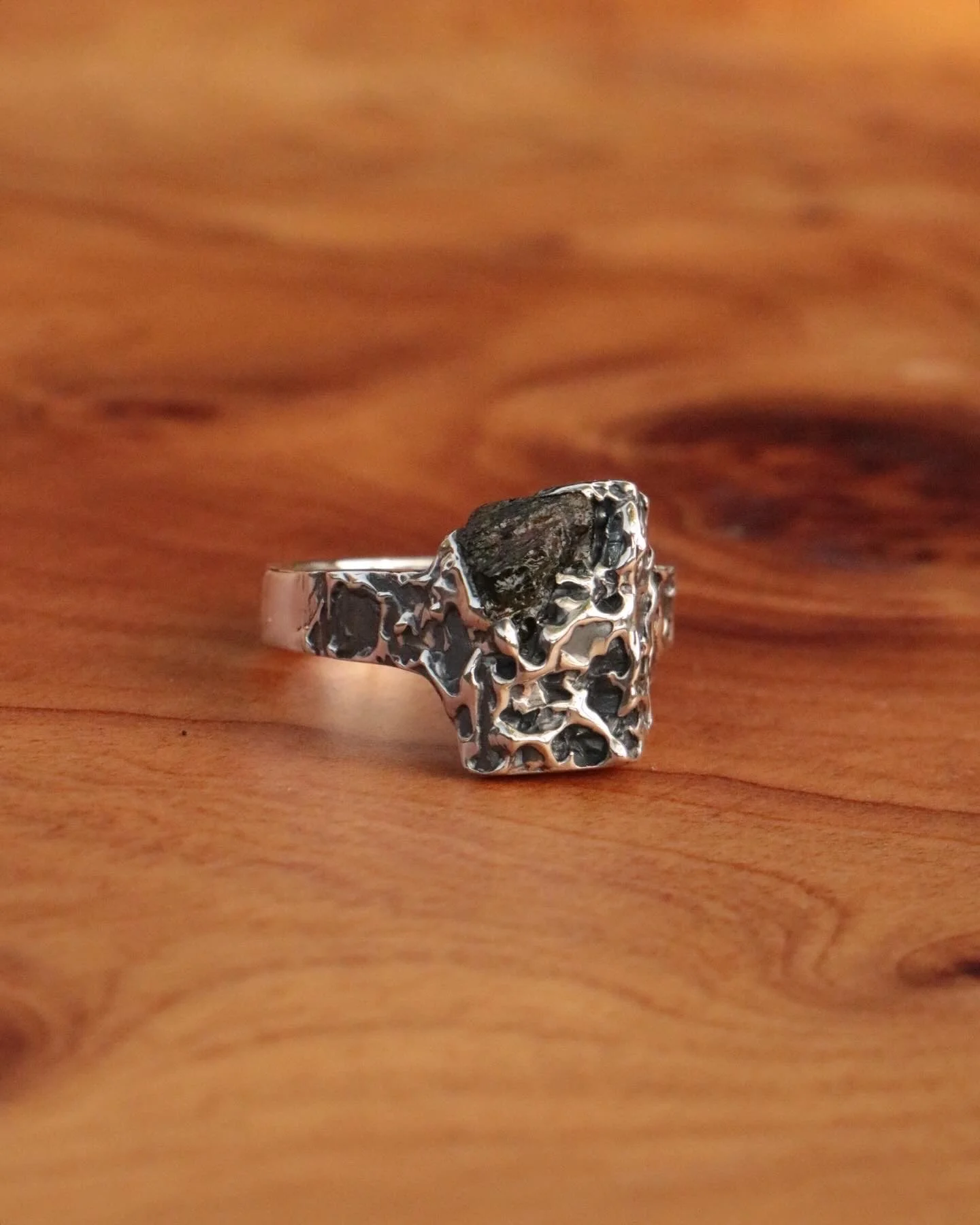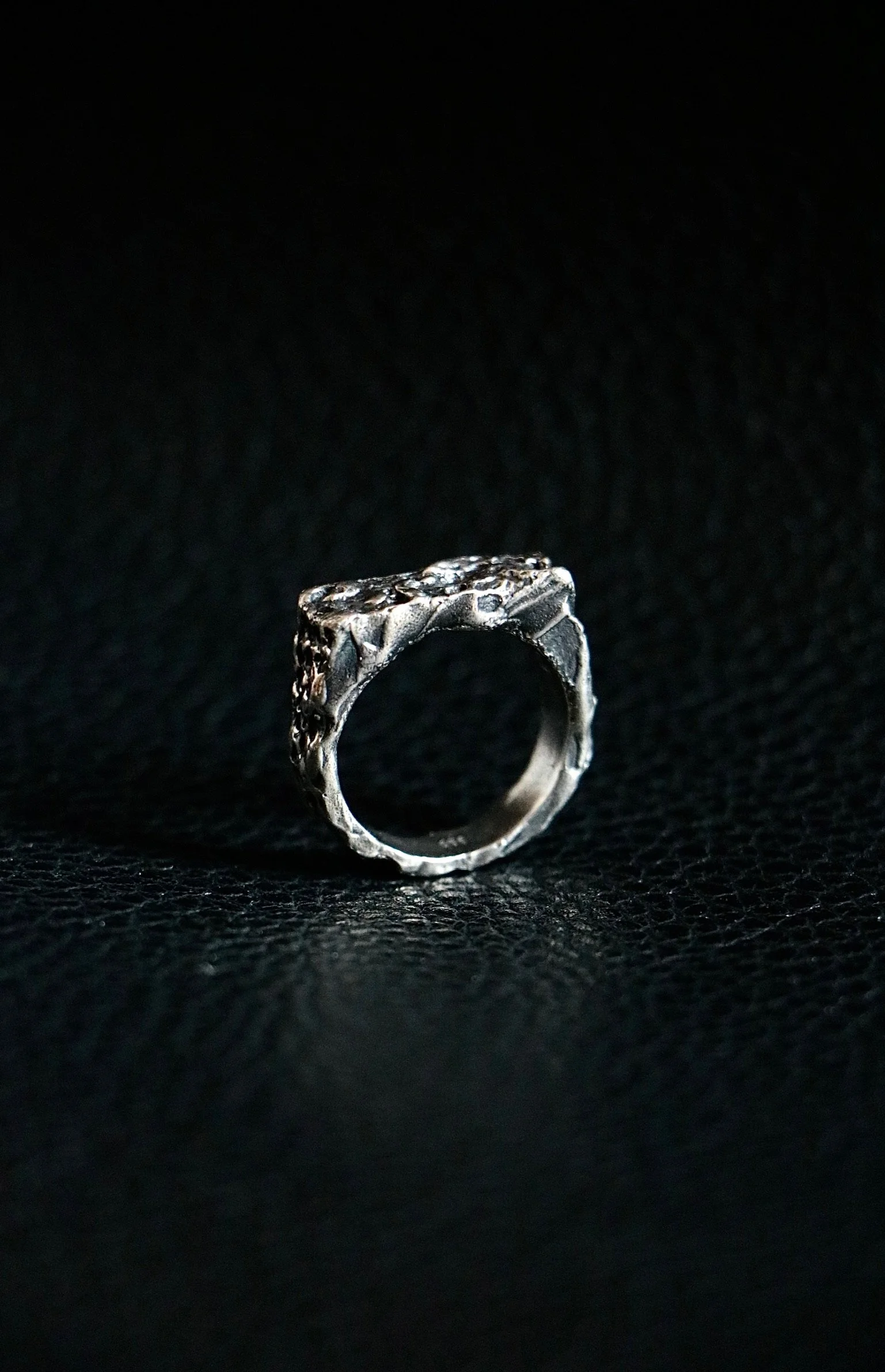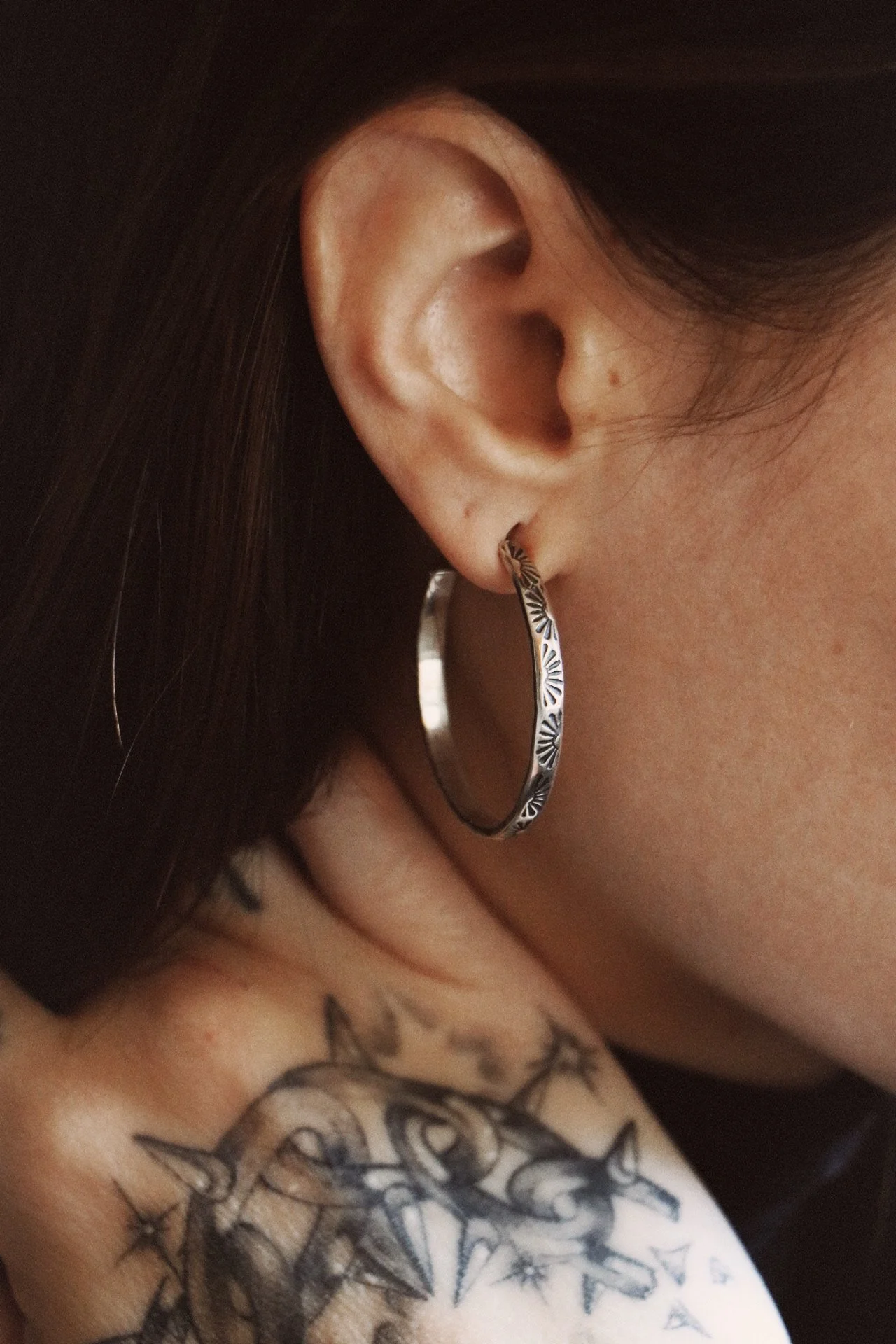Lee Reid is an American silversmith and small business owner from Dallas, Texas. After extensive travels all around the world, she resides back in Texas with her partner and pets. A self-taught hobby-jeweler for over a decade prior, she began professionally making jewelry in 2021 as an apprentice for Signet Jewelers in Portland, Oregon, USA. Early 2024, after multiple international art residencies where she learned to silversmith, Lee launched the first version of her business as Stone and Marrow. In the spring of 2025, Lee Reid Silversmithing officially launched. She creates custom jewelry, curates vintage fashion, and co-founded the forthcoming Meet Me in Marfa Tattoo & Jewelry Round-Up.
Note from the editor
For our Issue 15 Legacy Print appreciating past contributors who helped Blood Tree Literature grow to where it is today, we are excited to present our founding editor, Lee Reid, as the featured artist. Lee started BTL in 2017, acting as sole editor through Issue 04: Transparency and the Art Editor through Issue 14 Re:Build, and retired from the magazine in the spring of 2025. Without her, none of us would be here on this screen right now. We’re so thankful for the time, creativity, effort, and devotion Lee brought to this publication for eight years. It’s an honor to send her off with this feature, and we look forward to continue cheering on Lee Reid Silversmithing, Meet Me in Marfa, and all her future artistic pursuits.
Thank you for planting this seedling dream, Lee <3 We’ll do you proud!
BTL: First, I’d like to thank you for planting the seedling dream that is Blood Tree Literature, and for inviting a bunch of us old classmates from Santa Fe on the ride. What made you decide to start your own literary magazine?
Reid: No no, I should be thanking YOU guys for keeping her watered all these years when I was unable to. I mean it when I say I couldn’t do it without y’all.
Blood Tree took root in a classroom nearly a decade ago now, probably one we all shared, when exploring ways to apply our writing degree. Somewhere amid talk of project grants and book deals, literary magazines came up. I thought of all the source material we’d been linked to read for homework, and how most websites appeared to me to be outdated and unattractive—even the most prestigious of them. Looking back, it was the first of many indicators that I was captivated by design and how it could lend itself to the piece rather than being an afterthought.
Ultimately, I wanted to create a lit mag I wanted to see, one with correlative visual art and backend coding to enhance the experience on the screen (see issue 04, Transparency). The coding proved far beyond my expertise, but the visual art features persisted, making BTL the aesthetically curated, multimedia magazine it is today.
Coming from a literary background, how did you first get into metalsmithing and jewelry-making as your creative focus?
After graduating, the extent of my writing became entirely therapeutic. In the same year, I lost my dog, my home, my partner, and went solo traveling to a country I’d never heard of in order to grapple with the turmoil that had become my life. Journaling (and therapy, so much therapy) got me through, and left me with the question of “where to go from here?” From my ancient apartment in the heart of Kotor, Montenegro, I scoured the internet to find a purpose, a viable path for me to pursue through literature. That quest was my driving force over the next few years, leading me to Portland, Oregon, where I’d idealized a quaint life above a downtown coffee shop (HA).
To afford that life, I worked in a woo-woo gemstone store stringing necklaces for “fertility” and “prosperity” and sold copper jewelry at local shops. It was literal backbreaking work, but it was hands-on, and the satisfaction of holding a physical piece with rough hands that you labored over for hours, days, or sometimes weeks, was unmatched. Gradually and subconsciously, I prioritized jewelry over literature until faced with a distinct fork in the road: earnestly pursue screenwriting, or earnestly pursue silversmithing. That week I landed an apprenticeship as a goldsmith, and the rest is history.
The story of how you gained your artist residency in Lisbon is one of my favorite examples of “it never hurts to ask!” Could you share what it was like to put yourself out there like that as an indie professional, as well as more about your time building the jewelry studio at Buinho?
With less than a year of professional experience in metalsmithing under my belt and a makeshift home studio with only the barest of essentials, it was definitely bold of me to extend my services to a remote residency slapped in the middle of Portugal.
Much like the creation of Blood Tree Literature, the idea came about after weeks of researching residencies and realizing an itch in desperate need of a scratch—there was a lack of facilitation and representation for jewelers in resident spaces, aside from one or two smith-specific programs, one of which I went on to attend. With this newfound mission in mind, I contacted several places to which I personally dreamed of going—two in Spain, one in London, and one in Portugal. While Spain and London agreed that they should have a studio specific for jewelers, Buinho in Portugal had the means ready and waiting to make it happen.
As luck would have it, they’d just purchased a new house for residents which had a detached space. Embracing my “how hard could it be” gene, I threw a work-trade deal out there like a wet noodle—one month to build, two months to create—and low and behold, it stuck. A few months later, I quit my job, shoved my things in storage, and landed in Europe to begin the daunting task of sourcing tools in a foreign continent. (Spoiler alert: I somehow managed.)
Studio at buinho in lisbon, portugal
“All in all, the whole experience was thrilling. Several people warned it might’ve been a scam, writing it off as a ‘too good to be true’ scenario. I won’t lie, I had a few reservations myself, but they faded away as soon as the road turned to gravel, and sheep and wildflowers and cork trees guided me home for the summer, to Messejana.”
In between planned European residencies, you ended up at the Melamun Design Studio in Bali as a last-minute adventure. Were there any surprises that you learned about your artistic identity during that unexpected opportunity?
The most notable and most jarring surprise was the technical culture shock. While I was back in the states stressing about how expensive silversmithing can be, masters of the craft in Indonesia have been using jerry-rigged hand tools made from scissors and miscellaneous secondhand supplies for centuries. Their pickle (an acidic solution that removes firescale) was simply battery acid (which, to be clear, I do not recommend). Their torches, billow-powered by foot, ran on standard gasoline kept in emptied water bottles, and seeds from local trees acted as an adhesive to simplify soldering. Although safety protocols were practically nonexistent (not unlike shops in the states, to be fair), I respected the hell out of the resourcefulness, and found ways to incorporate their traditional methods into my own practice.
“Overall, the ‘surprise’ was that you can do as much, if not much more, with so much less.”
After your residency grand tour of Portugal, Indonesia, and the Ilias Lalaounis Jewelry Museum in Greece, did you experience any creative jetlag upon coming back home to the United States? Or were you perfectly revved (or relieved?) to settle into life as a small business owner?
Returning to the states was weird to say the least. One week I was bouncing around Lisbon with people who had quickly become my best friends, and the next I was back in my childhood bedroom, in my hometown, where I had no friends left. I had finally found my community abroad among other artists with whom I instantly clicked, and just as fast, had to leave them all behind. From a social aspect, it was incredibly depressing.
From a creative standpoint though, I was revved indeed. Perhaps, too revved? I went all in: built a website, registered my business, curated an Instagram, created a detailed custom form, all to realize nearly a year later (now) that the “most official” route is not always the best for business. These days, I get all of my custom work from word of mouth and/or Instagram, proof that sometimes simpler is better, at least in the beginning.
Much of the jewelry you make is inspired by the natural world. How do you feel that all the places you’ve traveled to and lived in affect your creative preoccupations?
“The landscape of each place played a role in the respective collections I made within them, but in a larger sense, traveling allowed me to explore traditional techniques and designs across cultures, inspiring the use of natural textures in my work.”
Congratulations on your recent engagement! Besides wedding bells, what else does the future hold for you and Lee Reid Silversmithing?
Ahhhh thank you so much! And I am so glad you asked because my partner, Rob, and I have been cooking up something in the desert for the past few months. We are hosting a tattoo and jewelry convention in Marfa, Texas called Meet Me in Marfa this October, and we could not be more stoked. For those who don’t know, Marfa is a small but mighty blip on the barren map of West Texas that boasts infinite charm and world-renown art. If all goes well, it’s our dream to one day expand the Meet Me events to the place where my ever-undulating creative journey all began, Santa Fe.

